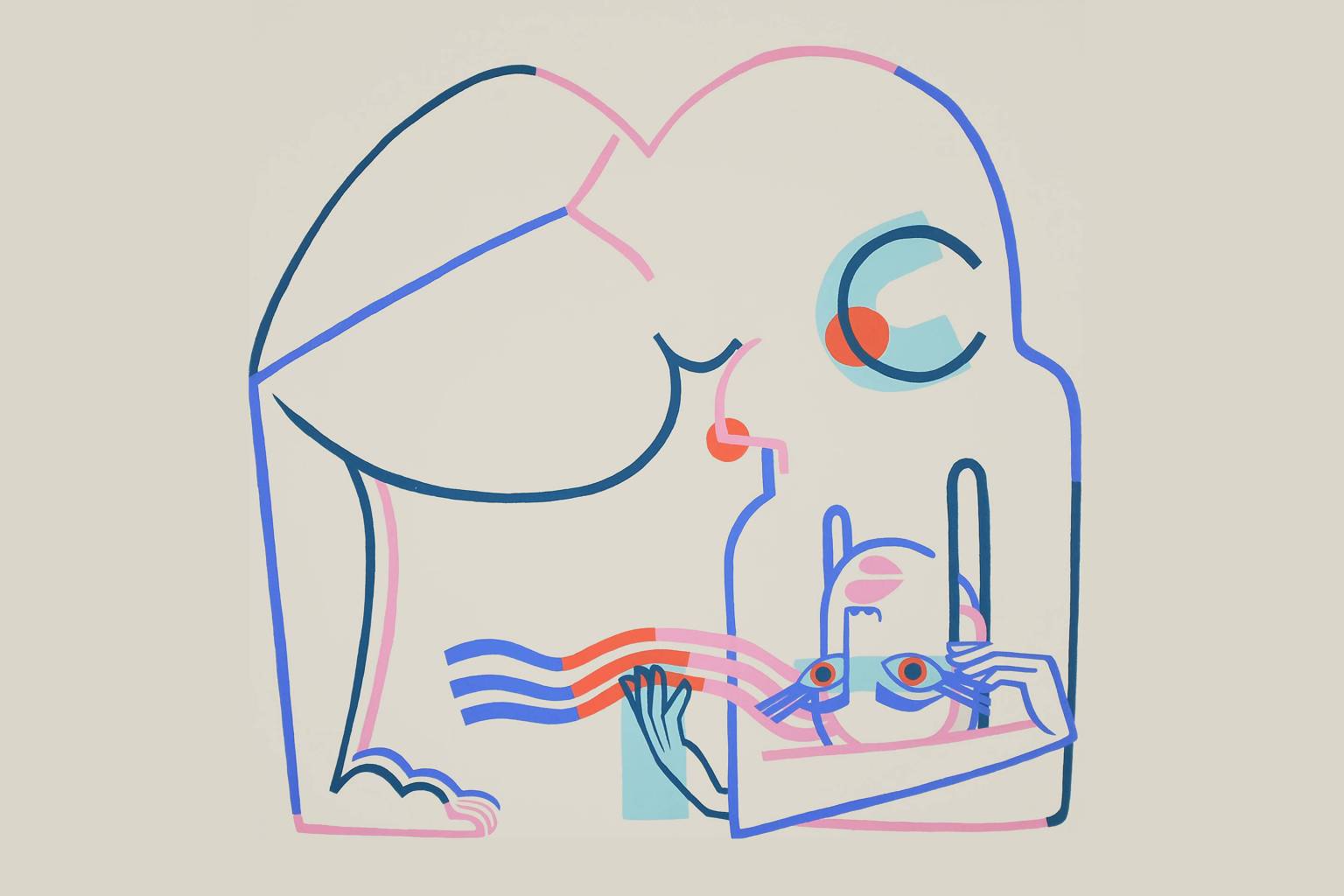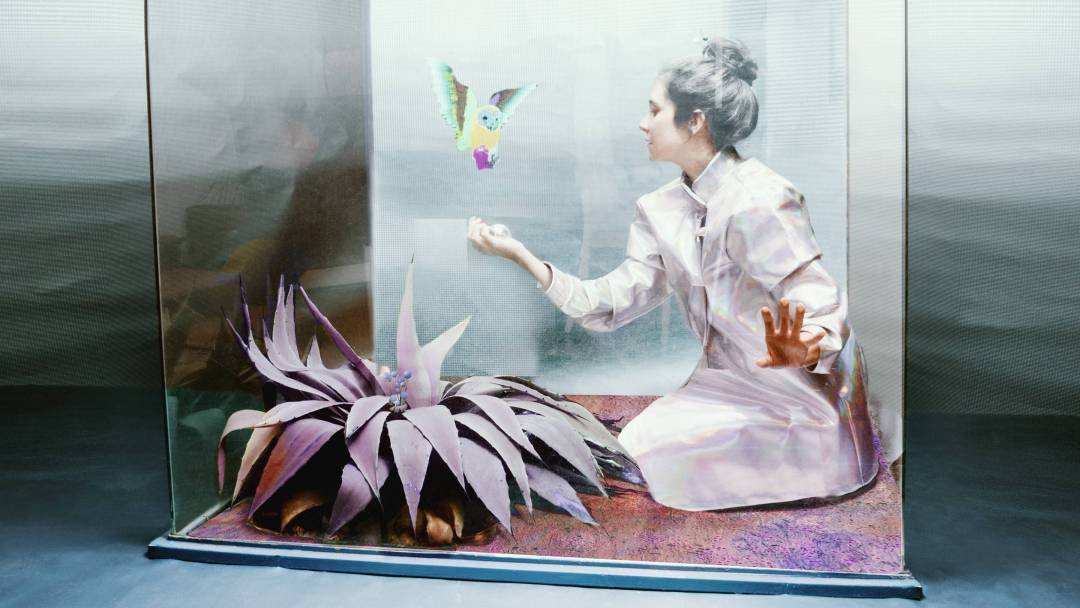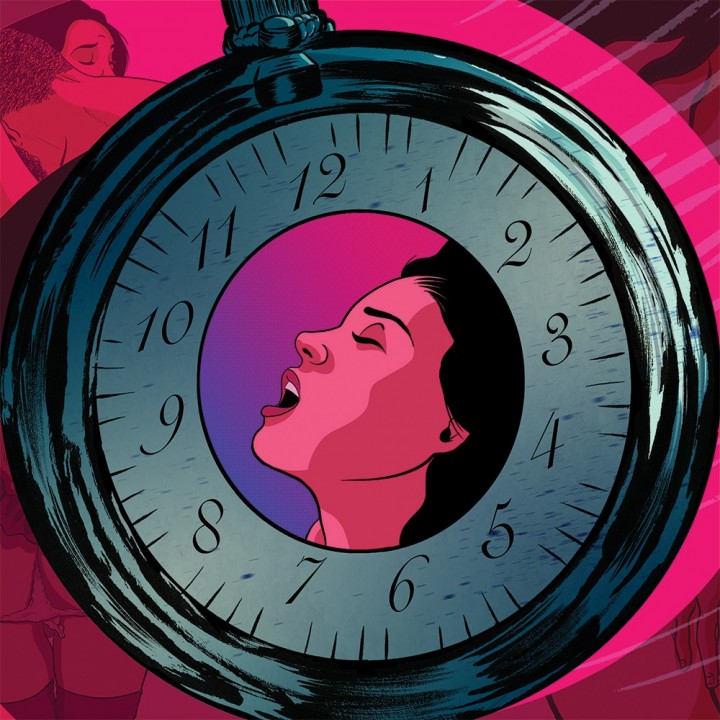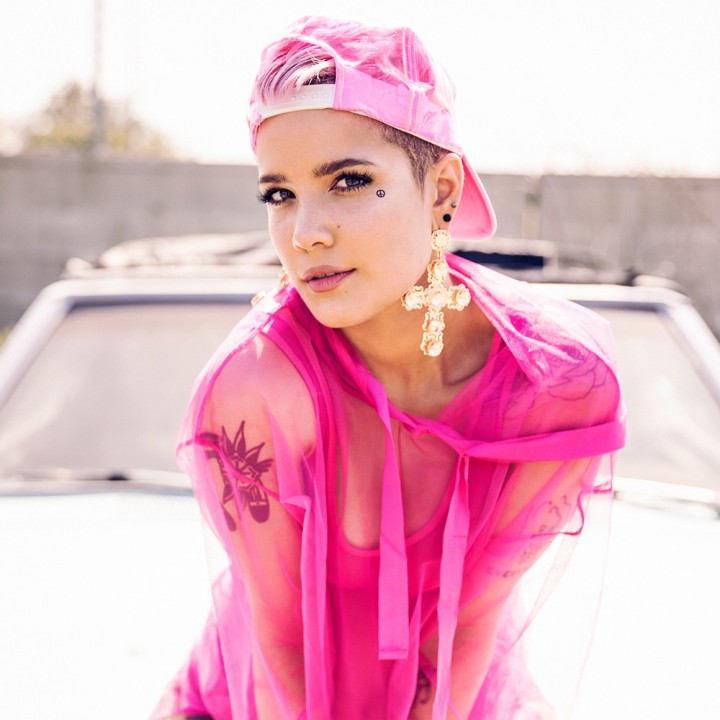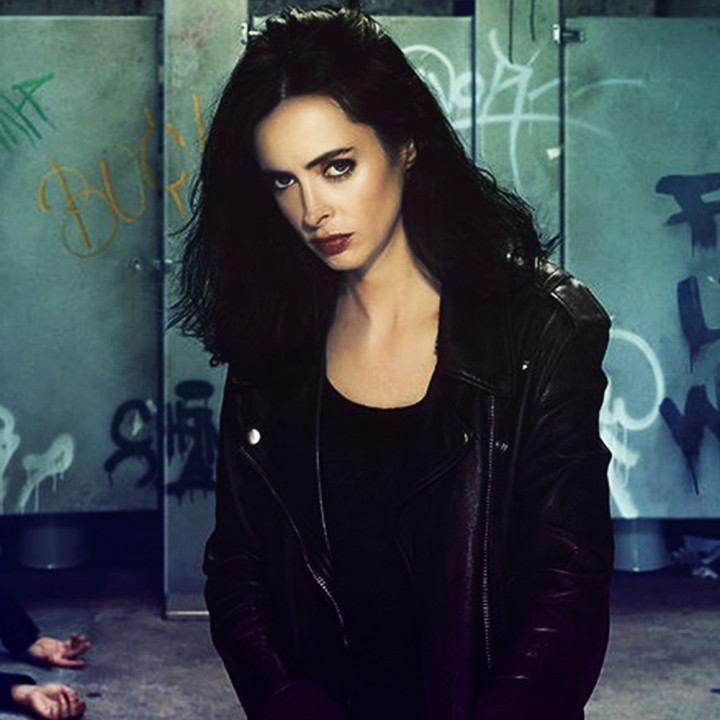
Nudity as a State of Mind, According to Artist Jillian Evelyn
How Evelyn used her dissatisfaction to inspire her signature (naked) aesthetic
Courtesy Jillian Evelyn
Jillian Evelyn doesn’t see sexuality in nudity.
The 31-year-old’s paintings, mostly starring naked contorting women, are depictions of bared-down illustrating themes such as anxiety or frustration with the way the lines move from one fictional extremity to the next. "So the nude is a mental state,” she says. While most naked forms present in art represent a version of lust, she questions what the vulnerable human state looks like without the infusion of sexuality.
“Personally, as I go through my day, when I take a shower or do something in my own world, I don’t think of my body as a sexual object," she says. "[My subjects] are never usually doing anything sexual, so it’s really interesting that people always think that just because they’re nude, that’s what it has to do with.”
It’s just about bending to society’s expectations.

Before she solely focused on her fine art, however, Evelyn found inspiration in her day job as a junior footwear sneaker designer at Converse in Boston until she relocated to Los Angeles in 2017. While she insists she stayed in the footwear industry "for longer than I would've liked", she also credits the eight years as formative in developing her signature aesthetic: the stress and overall dissatisfaction with her conventional career inspired her to draw women in uncomfortable positions, seemingly trying to push the boundaries of the canvas on which they’re painted, resembling her own inability to abide by society’s demands.
“The girls I was drawing started kind of contorting as a reflection of how I felt about my job and about the way I had been living my life,” she explains. “It’s just about bending to society’s expectations.” Evelyn’s creations, which she describes as abstract figurative work, are painted in unoffensive, pale colors and clean-looking, geometric shapes. Seemingly all belonging to the same family, her subjects are not too curvaceous, white and female—subscribing to the ethos that artists create what they're intimate with. After sketching a project on her iPad, she re-produces her work on canvas in pencil before tackling it with paint.
She also is sure to note that her work is a modern version of those influenced heavily by street art, abstraction and geometry—like Margaret Kilgallen and Barry McGee, along with designer Charley Harper. Alongside said techniques, she incorporates her experience as a newcomer to Los Angeles' art world after being raised in Michigan. She looks around and acknowledges the intricacies that define the peculiar bubble she finds herself in—one that is constantly shrinking at the same time as its growing thanks to social media.

When asked about the difference between being an artist in 2019 and years past, she is quick to note that “you had to hustle a lot more when it came to sending your work out. You’re still sending postcards or constantly emailing, [but] now it’s really about people finding you and connecting through Instagram, [which] has had a huge impact.” Now, however, she is coming to find room for life with less social media; after years of constantly publishing and interacting of the various platforms, she has established connections with galleries that will reach out to her directly for a show.
One such venue is Corey Helford Gallery in Los Angeles, home to her next yet-to-be-titled show. Kicking off on September 21, the exhibit will be a dual one, presenting her own work alongside artist Kristen Liu Wong’s, both concentrating on “flowers and the conversations on the meaning behind flowers from Victorian times, so it’s learning to use different objects and how to incorporate them in my work.”
Talk about the subject of her new exhibit takes us back to the white women she’s known for portraying: does she find the need to start depicting humans of different colors and sizes? Will she ever paint men? “Eventually, I’d like to start adding more men and a diversity of objects in my work,” she says.
One such venue is Corey Helford Gallery in Los Angeles, home to her next yet-to-be-titled show. Kicking off on September 21, the exhibit will be a dual one, presenting her own work alongside artist Kristen Liu Wong’s, both concentrating on “flowers and the conversations on the meaning behind flowers from Victorian times, so it’s learning to use different objects and how to incorporate them in my work.”
Talk about the subject of her new exhibit takes us back to the white women she’s known for portraying: does she find the need to start depicting humans of different colors and sizes? Will she ever paint men? “Eventually, I’d like to start adding more men and a diversity of objects in my work,” she says.
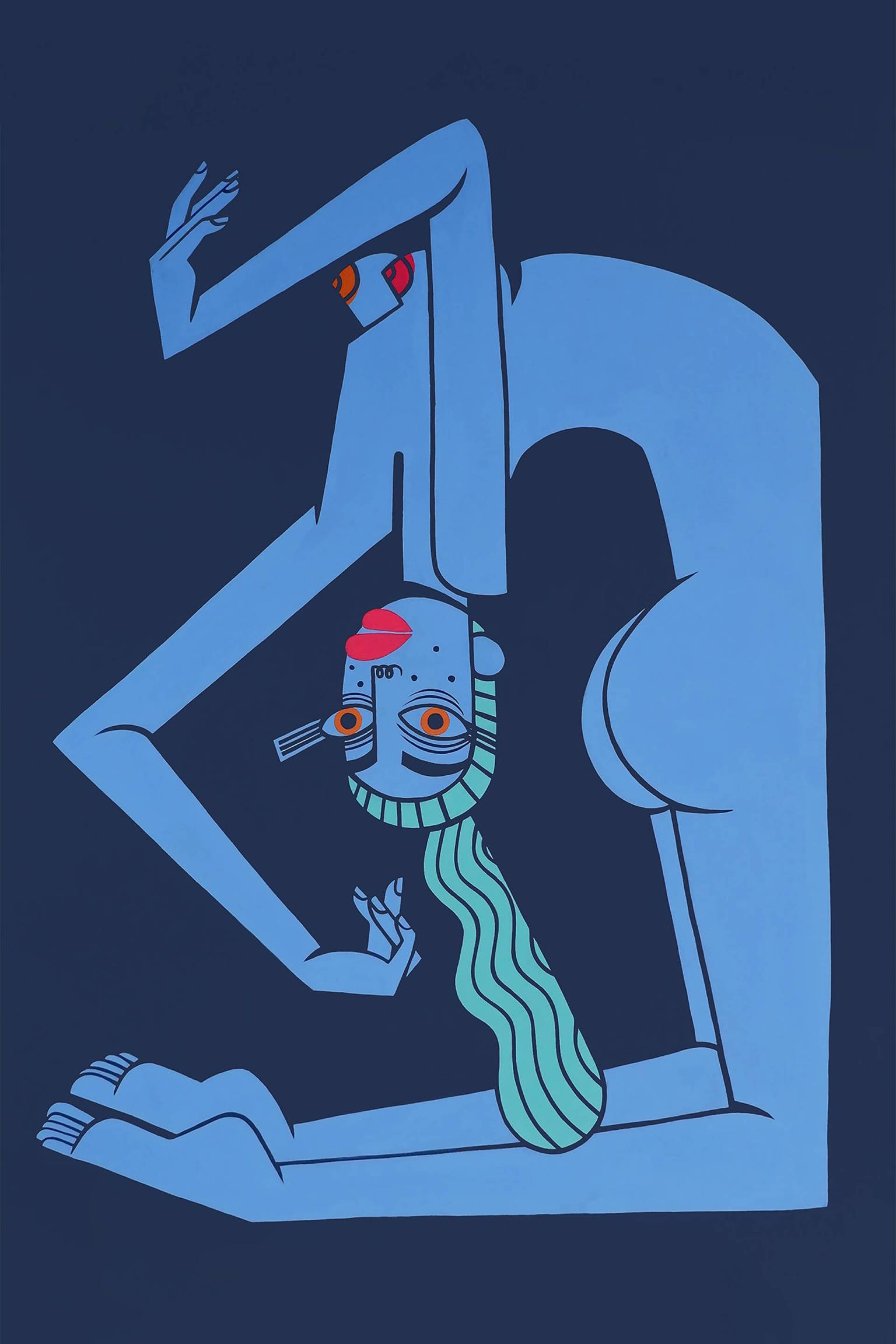
As for race, “I don’t really think too much of the color, just because they change, they’ll be blue, sometimes they’ll be different shades of pink or purples but you automatically end up drawing what you’re familiar with.” Being a white woman of a certain size herself, “a lot of times I have to push myself to make the limbs longer and whatnot because I’m really petite and I think that [...] you always end up drawing what you’re familiar with. I’ve been trying to also make [the subjects] curvier and more fun.”
Her womanhood affecting what she draws, Evelyn is quick to point out that her sex also impacts the way the world in general and the art world in specific reacts to her work. “There are all sorts of things that go into it that are heavily influenced by what it means to be a female,” she says. “Mostly the pressure and anxieties of it.” That anxiety fuels the way she perceives the bodies she paints (“there is so much stress on the female body and you’re always aware that you’re in that body”) and the selling of her art: “Sometimes I am really surprised at some of the females that I’ve always looked up to and at what their work is going for in comparison to some of these other male artists. I think it just comes with the need for more women to go out there and not be afraid to price their [work] higher. I think it’s sometimes easier for women to try to be humble [when pricing their art].”Eventually, her observations lead to predictions about future industry trends. “I think you’ll see more artists putting on their own shows and working less with galleries,” she says before delving into the financial aspect of the business. “[Today], most galleries get 50 percent [of the profits] and the artist gets 50 percent, which is insane. I’m really curious about how the industry is going to change throughout the years, especially now that there are more and more female artists.”
Her womanhood affecting what she draws, Evelyn is quick to point out that her sex also impacts the way the world in general and the art world in specific reacts to her work. “There are all sorts of things that go into it that are heavily influenced by what it means to be a female,” she says. “Mostly the pressure and anxieties of it.” That anxiety fuels the way she perceives the bodies she paints (“there is so much stress on the female body and you’re always aware that you’re in that body”) and the selling of her art: “Sometimes I am really surprised at some of the females that I’ve always looked up to and at what their work is going for in comparison to some of these other male artists. I think it just comes with the need for more women to go out there and not be afraid to price their [work] higher. I think it’s sometimes easier for women to try to be humble [when pricing their art].”Eventually, her observations lead to predictions about future industry trends. “I think you’ll see more artists putting on their own shows and working less with galleries,” she says before delving into the financial aspect of the business. “[Today], most galleries get 50 percent [of the profits] and the artist gets 50 percent, which is insane. I’m really curious about how the industry is going to change throughout the years, especially now that there are more and more female artists.”
